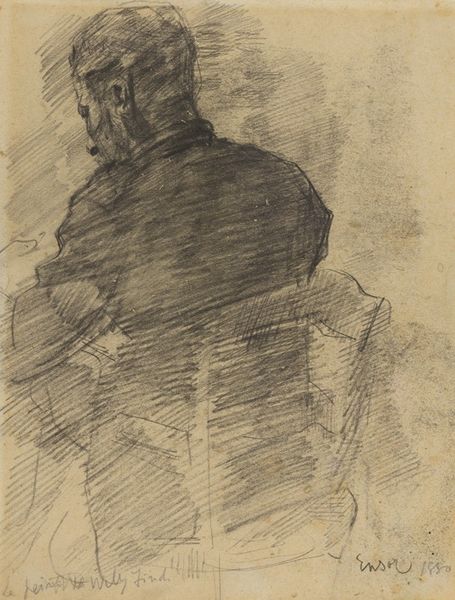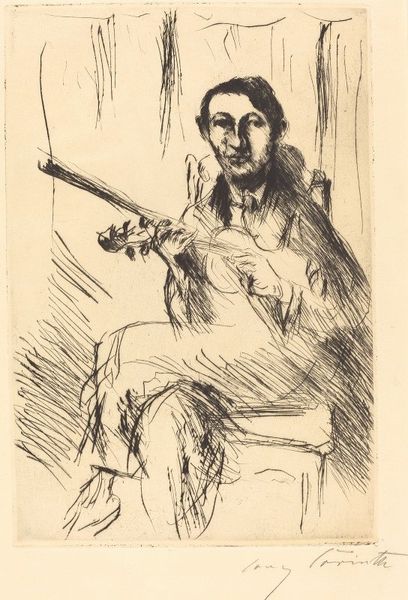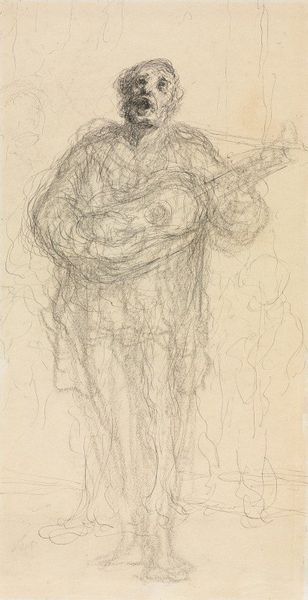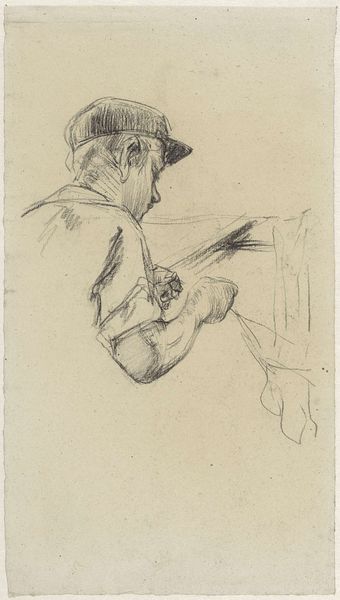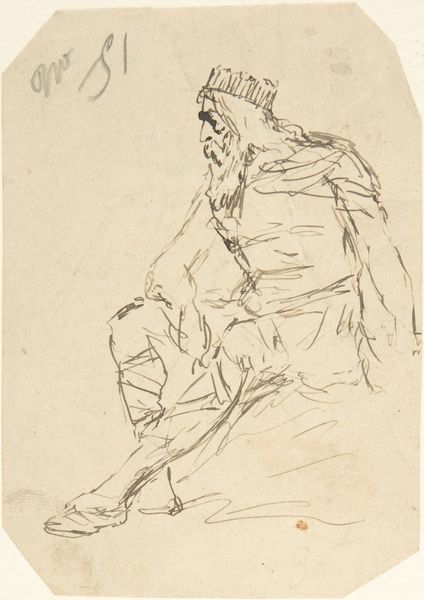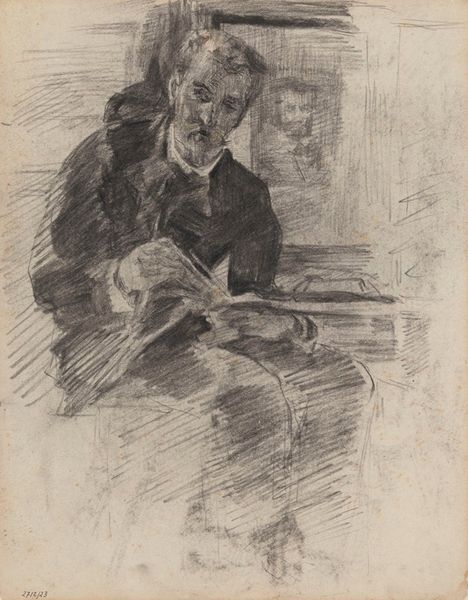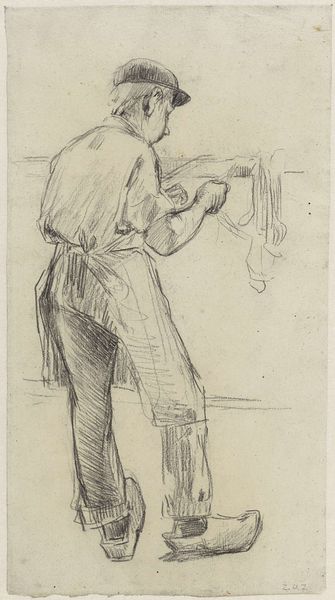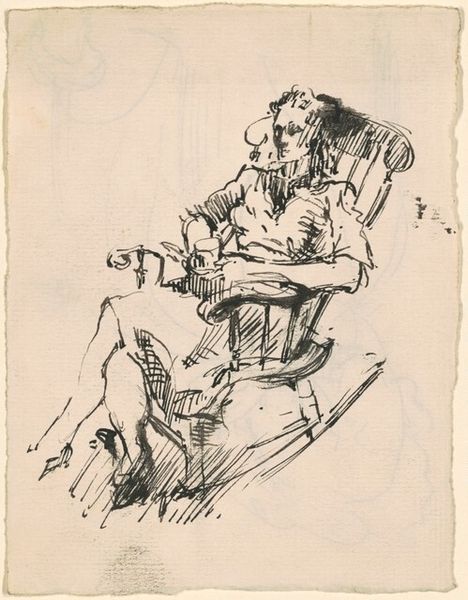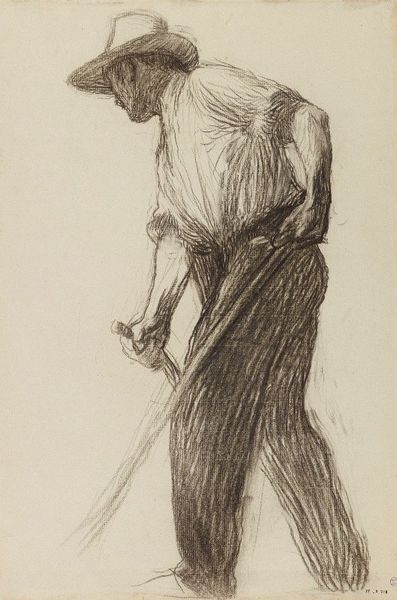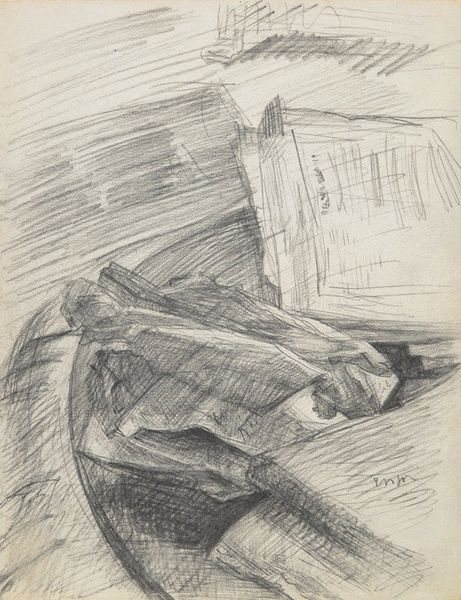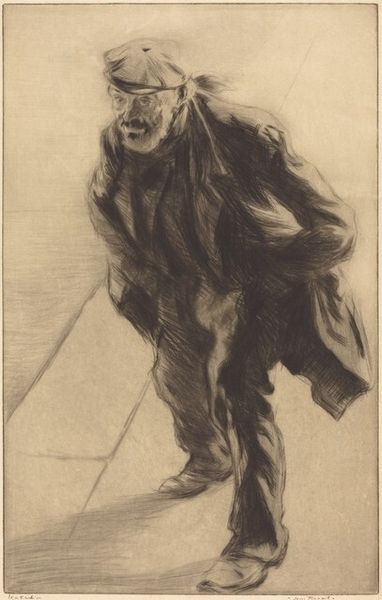
Copyright: Public Domain: Artvee
Editor: So here we have James Abbott McNeill Whistler's "The Guitar Player," created in 1875, an etching that evokes a sense of quiet contemplation. What strikes you most about this work? Curator: The portrayal of the musician through etching reflects the socio-economic realities of the time. Music and art weren't always accessible; they were often class markers. Do you see a dialogue here, in Whistler's choice of a working-class subject depicted through a fine art medium? How does that speak to tensions within Victorian society? Editor: That’s interesting. I hadn’t considered the class aspect so directly. It does seem to democratize the image a bit. But, isn't it still just a portrait of a man with a guitar? Curator: It is a portrait, yes, but think about what Whistler is *not* showing us. He's avoiding the opulent trappings of traditional portraiture. He strips it bare, focusing on the human form engaged with creative practice. Consider the symbolism: who gets to create? Whose creativity is valued and seen? Editor: I see what you mean. It's almost as if he's questioning the existing power dynamics through this simple depiction. What do you make of his signature in the bottom corner? Curator: The placement almost subverts its conventional role; it’s not an assertive statement of authorship. Instead, it’s like a whisper, part of the overall atmospheric effect. Think of how art movements like Impressionism were radical in their time, challenging the academy and established norms of artistic representation. This piece seems to quietly participate in that spirit of challenging norms. Editor: That gives me a lot to consider. It really changes how I view the piece. Curator: Indeed! Art can offer pathways into understanding our histories. What a powerful form!
Comments
No comments
Be the first to comment and join the conversation on the ultimate creative platform.
